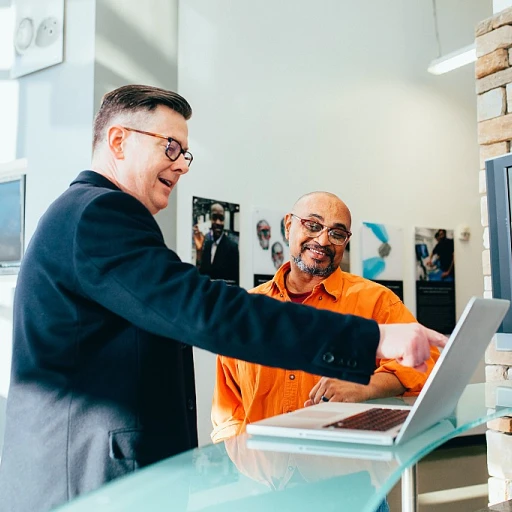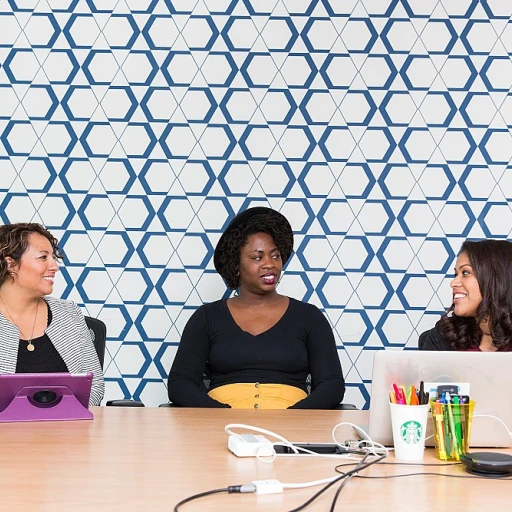
Understanding the Personal Learning Ecosystem
In today's rapidly changing world, it's crucial for learners to develop a personal learning ecosystem that is adaptable and sustainable. As students and lifelong learners, the ability to effectively curate learning resources and tools is more important than ever. This personalized approach ensures that individuals can navigate their unique educational pathways and goals.
The Importance of a Tailored Learning Environment
Personal learning environments (PLEs) offer a framework for students to gain control over their educational experiences. These environments leverage digital tools and resources to create a customizable and dynamic learning process. By integrating technology into education, learners can access a plethora of online courses and educational materials that cater to their specific learning styles and objectives.
In the ever-evolving digital landscape, the ability to efficiently manage and update one's learning resources can drastically affect student learning outcomes. Accessing cutting-edge educational technology and collaborating in social media environments can significantly enhance the learning experience, offering a personalized approach tailored to individual needs.
A New Era of Self-Directed Learning
As education technology continues to evolve, students in the United States and beyond must become adept at directing their own learning journeys. Empowering learners to take charge of their personal learning environments not only promotes autonomy but also encourages the development of critical skills needed in tomorrow's workforce. This is a crucial part of ensuring that students remain adaptable and resilient in the face of future challenges.
The emergence of personalized learning, coupled with access to diverse digital resources, puts students in the driver's seat of their education. By embracing these opportunities and cultivating a robust learning ecosystem, learners place themselves on a trajectory of continuous improvement and lifelong learning.
Key Components of a Personal Learning Environment
Essential Elements of a Robust Personal Learning Environment
Crafting a personalized learning ecosystem involves integrating various components that facilitate an effective learning process. A comprehensive environment ple is not only about choosing the right digital tools but also about structuring the entire learning experience to complement your unique needs and goals. To navigate this journey, learners must first understand the fundamental components that make up their personal learning environment. Here's a breakdown of some key elements:- Digital Tools: Embrace a variety of digital tools, ranging from mobile apps to online platforms, that support your preferred learning styles. These tools enable you to access learning resources and participate in student learning activities, making it easier to engage with educational content at any time.
- Access to Online Resources: Online courses and learning resources are indispensable to students aiming to enhance their skills and knowledge. They provide learners control over their educational paths, enabling personalized learning experiences that cater to their interests and schedules.
- Learning Networks: Building a resilient learning network is crucial for enhancing collaborative learning experiences. By leveraging social media and other collaborative platforms, learners can engage with peers, educators, and industry professionals, facilitating a broader exchange of ideas and support.
- Technological Platforms: Utilizing innovative education technology platforms can significantly impact how students interact with learning materials. These platforms offer interactive interfaces and adaptive learning environments that adjust to the pace and style of each learner.
- Personalization: Personalizing your ple personal process involves tailoring your education to fit your individual needs and aspirations. This means selecting tools and resources that match your learning preferences to optimize the entire learning environment.
Adapting to Technological Advancements
Embracing Technological Change in Learning
As we navigate the future of work, adapting to technological advancements becomes crucial for maintaining a competitive edge. The integration of technology into personal learning environments (PLEs) offers unprecedented opportunities for learners to tailor their educational experiences. With the rise of digital tools, students can now access a vast array of resources and online courses, making personalized learning more accessible than ever.
Technology has revolutionized the way we approach education. In the United States and beyond, learners have more control over their learning process, thanks to the proliferation of digital tools and platforms. These tools enable students to engage in directed learning, allowing them to focus on specific skills and learning styles that align with their personal and professional goals.
Access to technology also facilitates a more dynamic learning environment. Social media and other online platforms provide learners with the opportunity to connect with peers and experts globally, enriching their learning experiences. The ability to learn online and participate in exclusive virtual learning environments further enhances the personalization of education, catering to individual learning preferences and needs.
To maximize the value of tech skills courses, it's essential to integrate these advancements into your personal learning ecosystem. By doing so, you can create a more resilient and adaptive learning network that evolves with technological changes. For more insights on how to leverage technology in your learning journey, explore this resource.
The Role of Self-Directed Learning
Navigating the Path of Independent Learning
In the ever-evolving landscape of the future work environment, self-directed learning plays a pivotal role. It empowers learners to take control of their educational journey, utilizing digital tools and resources available at their fingertips. With a variety of online courses and educational platforms, students can now tailor their learning experiences to align with their personal goals, needs, and learning styles. The ability to access personalized learning environments is indispensable in today's digital age. Learners can harness the power of technology to refine their skills, adapt to new information, and respond to an ever-changing professional landscape. It's crucial for students to actively engage with educational materials, selecting resources that best suit their personalized learning environment and optimum learning styles. Developing a successful personal learning ecosystem (PLE) lies in the active participation of the learners themselves. They must embrace a proactive approach to identifying and leveraging the most effective digital tools and platforms. Whether it's interacting through social media, enrolling in online courses, or exploring open-access learning resources, students today can craft learning experiences that are both enriching and relevant to future work. Moreover, this personalized approach to education fosters a stronger sense of ownership over the learning process. Students gain the confidence to navigate through digital environments while building a solid foundation of skills that are essential for career advancements. For those based in the United States and beyond, embracing this self-directed learning journey can enhance both professional development and personal growth. Self-directed learning not only allows students to explore various educational paths but also contributes to creating a robust personal learning environment. This autonomous form of education ensures that learners maintain control over their own learning journey, further developing critical skills necessary to thrive in the ever-changing professional world.Building a Resilient Learning Network
Fostering a Strong Support System
Creating a resilient learning network is essential to navigate the ever-evolving landscape of work. By surrounding oneself with a diverse mix of individuals and resources, learners can strengthen their personal learning ecosystems and foster growth.- Leverage Digital Tools: In today’s digital age, tools like social media platforms and online courses provide students across the globe access to vast educational resources. These platforms facilitate connections between learners, allowing for knowledge sharing that transcends traditional educational environments.
- Tailor Your Environment: It's crucial to personalize your learning environment to match your unique learning styles. Embrace resources that offer personalized learning experiences tailored to your individual needs. This could mean adapting how you use digital tools, setting specific learning goals, or customizing your educational pathways.
- Engage with Various Learning Styles: Different learners have different preferences in how they absorb information. Whether through auditory, visual, or kinesthetic methods, a resilient learning network supports these varied styles by providing access to a rich tapestry of learning experiences.
- Utilize Educational Technology: The rise of education technology has transformed how individuals build and maintain their learning ecosystems. By incorporating the latest technological advancements into the learning process, students can enhance their personal learning environments, making them more interactive and effective.
- Cultivate Self-Direction: Encouraging self-directed learning is another pillar of building a robust educational environment. By taking control of their learning journey, students can continuously adapt and refine their learning environments to align with their personal goals and the demands of the evolving digital landscape.
Measuring Success and Continuous Improvement
Assessing and Evolving Your Learning Path
To thrive in the constantly changing landscape of work, students and professionals alike must focus on measuring the success of their personal learning ecosystems (PLEs). Assessing personal progress allows for continued evolution and improvement in navigating the educational environment. Here are some strategies to consider:- Regular Reflection: Allocate time to evaluate your learning journey regularly. Identify the skills you've acquired, whether from online courses or social media interactions, and consider how these skills align with your personal goals and the demands of the workplace.
- Feedback Integration: Engage with peers, mentors, and educators to gather feedback on your learning process. This can come from various digital tools and resources that facilitate connections within educational ecosystems. Such feedback is crucial for identifying strengths and areas for improvement, and for tailoring your PLE to better suit your learning style.
- Utilizing Learning Analytics: Take advantage of technology that offers insights into your learning behaviors and achievements. Digital platforms and educational technology can provide personalized metrics, helping you refine your learning experiences through data-driven decisions.
- Adapting to Change: As technology continues to transform the landscape of education, be open to adjusting your strategies. Access to new learning environments and the integration of emerging digital offerings can reinforce and expand your learning environments, enriching your educational journey.
- Setting Achievable Goals: Establish clear, realistic goals within your learning environments. Regularly revisiting these goals ensures they are ambitious yet attainable, motivating your progress while maintaining a pace that accommodates your unique learning styles.
Ultimately, the learning process should be both dynamic and self-directed. By leveraging a resilient learning network, individuals have the control necessary to personalize their educational paths. Continuous improvement is key, as it fosters a cycle of growth and ensures students remain competitive in the workforce, not just in the United States but globally.












